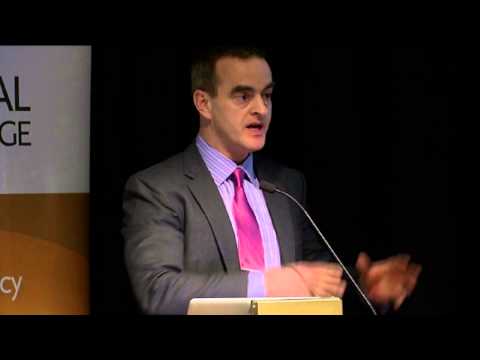1. This is a proposal for the most profound monetary and banking reform in centuries. It is based on the work of a long line of distinguished economists, including Irving Fisher, Milton Friedman and the founders of the Chicago School of Economics, who advocated laissez-faire in industry but not in banking.
2. The work is motivated by Irving Fisher’s 1936 book “100% Money”, with actual quantitative results worked out for the US economy today.
3. The paper was written by two IMF economists, Jaromir Benes and Michael Kumhof. Kumhof was a Barclays Bank PLC manager for five years.
4. An extensive section on monetary history shows that government control over money creation has generally been superior to private control.
5. There is also an exhaustive explanation of the current money creation process, supported by many statements from eminent economists and central bankers.
6. The Chicago Plan ensures that the central bank, rather than private banks, creates the country’s money supply.
7. Deposits in banks would no longer be backed by loans, which are volatile because they depend on banks’ willingness to lend.
8. Deposits in banks would instead be backed by 100% of government-created money – indestructible money.
9. Credit creation would remain private, but could no longer be financed by private money creation.
How it is done
1. The government creates sufficient indestructible reserve money to provide 100% backing for all deposits. It lends this money to banks at a small interest rate. The government is left with a very large claim against banks.
2. The reserve money represents equity in the commonwealth, not debt.
3. The government repays part or all of outstanding government bonds, against the cancellation, or the transfer to households, of part of its claim against banks.
4. The government pays a one-off citizens dividend, through a transfer to households of part of its claim against banks. Households use this to repay a large portion of private debt.
5. The credit part of banks is separated from the deposit part. The bank becomes a true intermediary that has to attract reserve money before being able to lend it. This makes it much easier to prevent credit-driven business cycles.
Consequences
1. Money creation no longer requires private debt creation.
2. The quantity of money is directly controlled by the central bank, not by private banks.
3. Credit creation remains private, and on a much sounder long-term basis than before.
4. Banks become true intermediaries that can be run conservatively for the public benefit.
5. Financial crises do not affect the quantity of money or the safety of the payments system.
6. Dramatic reduction or even complete elimination of the public debt.
7. Dramatic reduction of private debt.
8. Credit-driven business cycles are not eliminated but significantly reduced if the Chicago Plan is combined with quantitative lending guidance, a policy that can be much more effective in a world where banks cannot create money.
9. No bank runs are possible because all money is 100% backed by public reserves.
10. There can be no liquidity traps, as central banks can always stimulate a severely recessionary economy through money injections or through below-zero interest rates.
11. Inflation can drop to zero without posing problems for monetary policy.
12. Real interest rates drop dramatically because equity, not debt, becomes the norm.
13. The government can use revenue from money creation to dramatically lower taxes.
14. Lower interest rates and taxes lead to potentially very large output gains.
If you look on youtube you will see some presentations by Michael Kumhof. The most recent of his slideshows is one he did in Stockholm on Sept 12, 2013 and it is here.
However, despite its good intentions and sound theory, I believe with others that it is politically unrealistic to think it could be implemented. There are three high level bank lobbyists for every elected member in Washington. Moreover, the New York Times article of 21 October 2011 said the banking industry had spent $2.3billion on campaign donations from 1990 to 2010.
Lietaer, Arnsperger, Groener and Brunnhuber in their Club of Rome book Money and Sustainability 2012, also point out that “although it would eliminate the risk of widespread banking crashes and of sovereign debt crises, there would still be monetary crises. ..The 2008 monetary crashes would not necessarily have been avoided.” They also point out that nationalisation of money creation process can’t be done on a small scale and any change involves risk. Large scale change involves greater risk. Moreover there could still be a risk of inflation if governments were the only ones in charge of creating money. The hyperinflation of the Zimbabwean dollar could happen if another Mugabe got into power.

